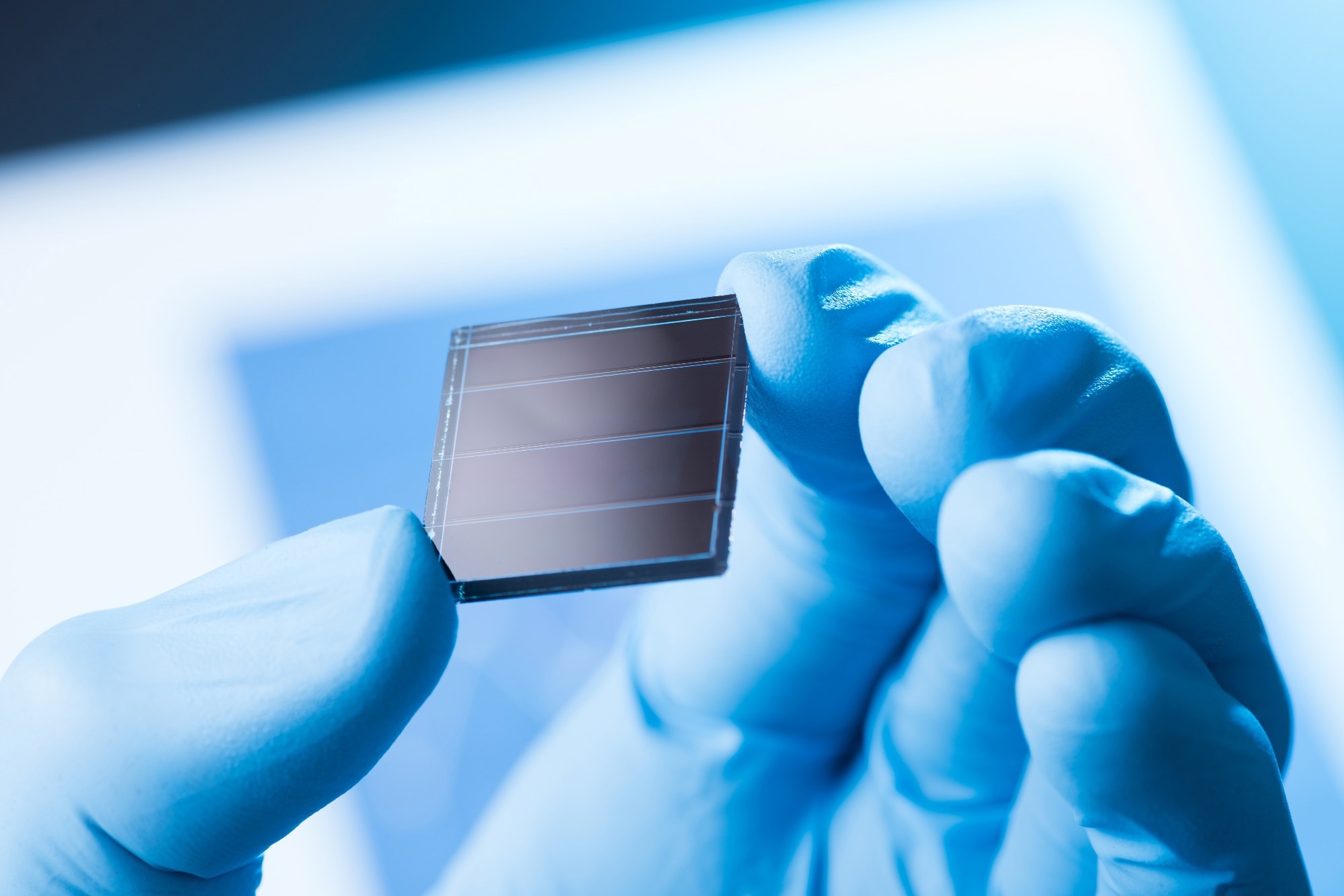The molecular structure of organic semiconductors plays a crucial role in determining the outdoor stability of organic solar cells.

Image Credit: nevodka/Shutterstock.com
A team led by KAUST has gained molecular-level insights into a specific group of organic solar cell materials, referred to as Y-series non-fullerene acceptors (Y-NFAs). This discovery is anticipated to contribute to various applications, spanning from photovoltaic windows integrated into buildings to environmentally sustainable net-zero greenhouses.
Organic solar cells, known for their lightweight, flexibility, quasi-transparency, and potential for large-scale production, have become a focal point in renewable energy research.
To enhance power conversion efficiencies, researchers have incorporated Y-series non-fullerene acceptors (Y-NFAs) into the active layer of these solar devices, achieving groundbreaking advances in high-efficiency solar cells.
Y-NFAs are distinguished by their wide absorption spectra, adjustable energy levels, and outstanding charge transport characteristics, rendering them ideal components for organic photovoltaic applications, as explained by Han Xu, a PhD Student in Derya Baran's research group.
The research team has achieved remarkable device efficiencies of up to 19%, but a clear understanding of the connection between the molecular structure of these materials and their stability remains elusive. Ensuring consistent performance of Y-NFA-based solar cells in real-world operational conditions is also a challenge, which is impeding the commercialization of these innovative devices.
Stability is just as crucial as efficiency when assessing the quality of solar cells. The longevity of a device relies on variables like ambient moisture, oxygen levels, exposure to light, and “outdoor evaluation, compared to lab-scale stability assessments, is the closest way to assess the real-world performance of a solar cell,” Xu notes.
Baran, Xu, and their team assessed the outdoor stability of diverse Y-NFA-based solar cells in the harsh, hot climate of Saudi Arabia. This study aimed to uncover the relationship between the molecular structure of these devices and their stability, providing guidance for designing small molecules that can produce high-performance solar cells with improved stability.
To shield the devices from the penetration of moisture and oxygen and mitigate their impact, they enveloped the devices in thermoplastic polyurethane. The performance of these solar cells was then evaluated using natural sunlight as the light source.
Our tests revealed that organic solar cells operating outdoors presented minor performance changes at 65 degrees Celsius and the overall stability of the solar cells is connected to their photostability.
Han Xu, PhD Student, King Abdullah University of Science and Technology
This observation suggests that light exposure is the primary factor influencing the outdoor durability and lifespan of these devices.
“Improving the photostability of active layer materials is crucial for enhancing the outdoor lifetime of solar cells,” he says.
The researchers uncovered a connection between the molecular structure of Y-NFAs and their outdoor stability. They observed that Y-NFA molecules with functional end groups containing fluorine and extended hydrocarbon side-chains demonstrated improved outdoor stability, safeguarding them against photodegradation. This protection is vital for maintaining the efficiency and long-term performance of Y-NFA solar cells in outdoor conditions.
The research team is preparing for international collaborations to conduct outdoor stability testing on diverse devices in different environmental settings. They are also actively working toward developing solar devices ready for the market.
The fabrication of large-area devices is indispensable for commercialization, which calls for the integration of multiple technologies.
Han Xu, PhD Student, King Abdullah University of Science and Technology
Journal Reference:
Han, X., et al. (2023). Dissecting the structure-stability relationship of Y-series electron acceptors for real-world solar cell applications. Joule. doi.org/10.1016/j.joule.2023.07.003.